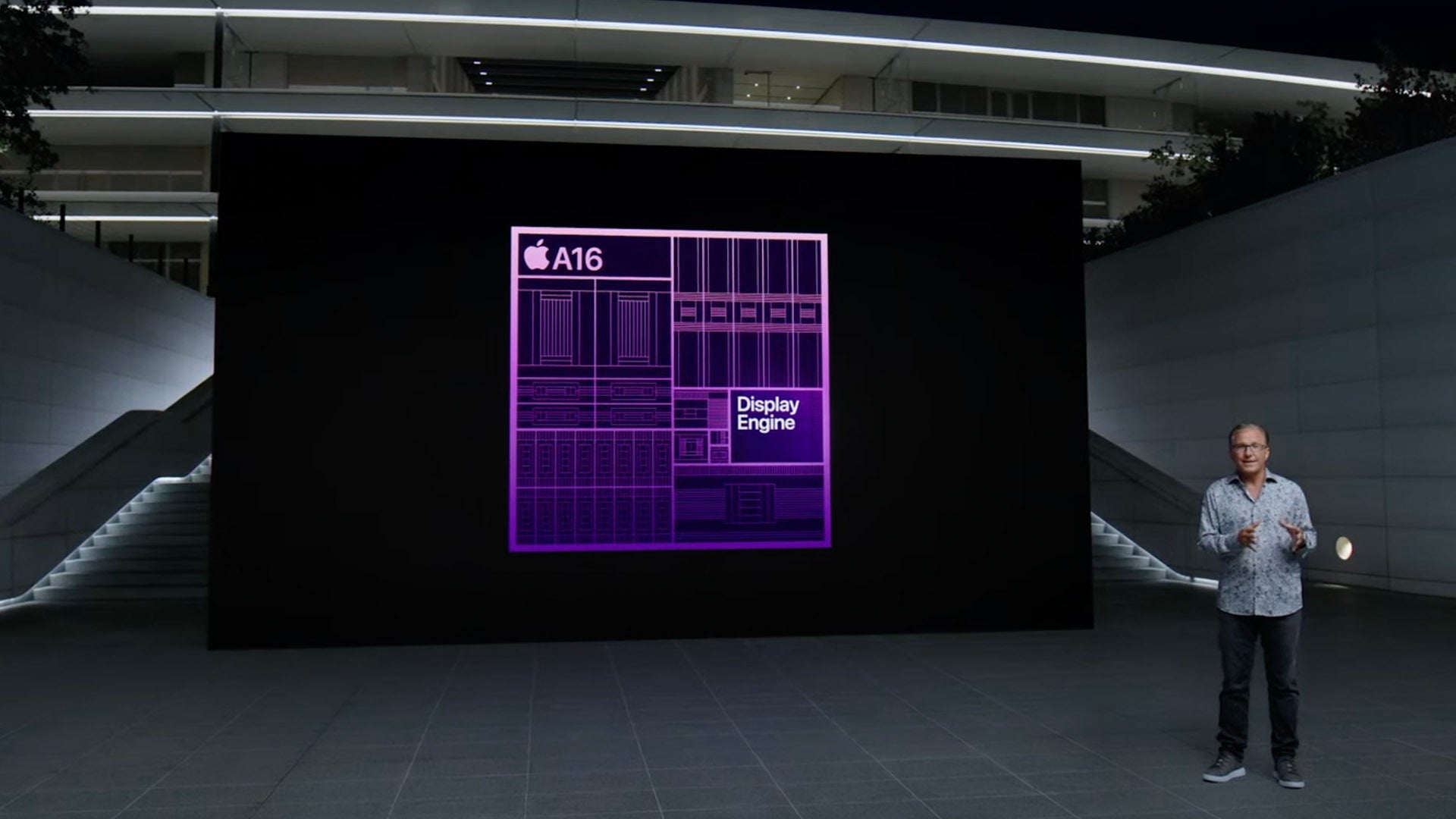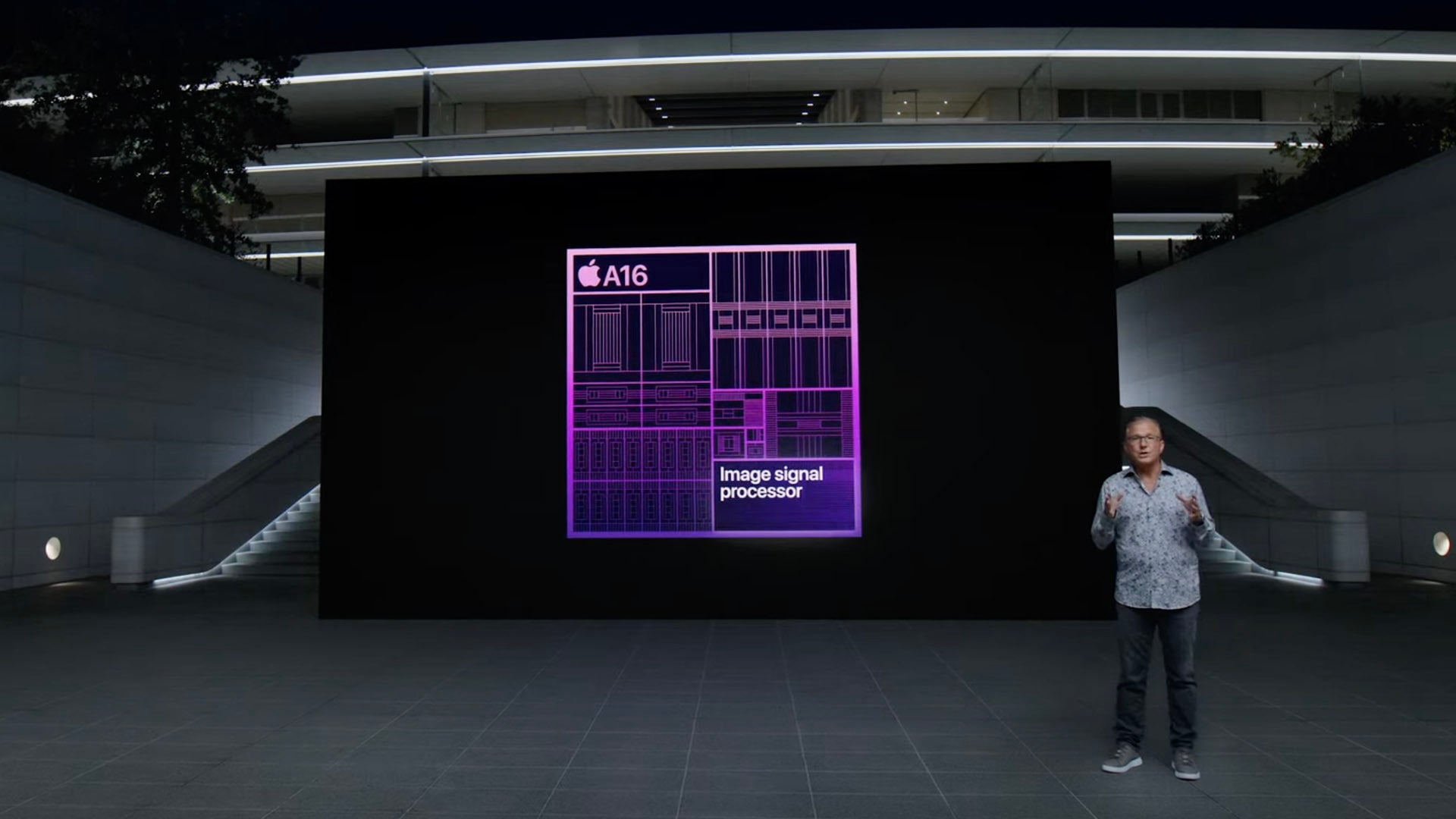But how does this matter to your in real use, and what is the actual improvement compared to the previous model?
We are here to explain all that’s new and noteworthy about the Apple A16 Bionic, compare it to the Apple A15, and also draw parallels between Apple’s fastest chip and the current best processor on the Android side of things, the Qualcomm Snapdragon 8+ Gen 1.
Apple quotes about the A16 Bionic:
- “Focused on three main areas: power efficiency, display, and camera”
- “Fastest chip ever in a smartphone”
- “The new CPU is 40% faster than the competition”
has 16 billion transistors, the most ever in an iPhone
first chip built on a state-of-the-art 4nm process enabling greater efficiency while delivering even more performance
Apple A16 Bionic vs A15 Bionic vs Snapdragon 8+ Gen 1 tested
Before talking about the architecture of the new A16 Bionic chip, let’s see how it performs in benchmarks, which may not be a perfect tool to measure performance, but are the best we’ve got.
CPU performance
| A15 Bionic | A16 Bionic | |
|---|---|---|
| Geekbench 5 Single-core | 1734 | 1887 (+9%) |
| Geekbench 5 Multi-core | 4818 | 5455 (+13%) |
*as tested on iPhone Pro Max models.
| Snapdragon 8+ Gen 1 | A16 Bionic | |
|---|---|---|
| Geekbench 5 Single-core | 1334 | 1887 (+41%) |
| Geekbench 5 Multi-core | 3737 | 5455 (+46%) |
*Snapdragon chip tested on OnePlus 10T.
Keep in mind that the results for the A16 Bionic come from a pre-release iPhone and we are yet to confirm them once we have our own unit.
The difference compared to the best Android has at the moment is quite striking. Having a 40%+ advantage is no joke.
CPU and RAM
The A16 Bionic uses a 6-core CPU with two performance cores and four efficiency cores, and it’s a similar design to the CPU on last year’s iPhone 13.

Apple mentioned that it uses new new efficiency cores, however, with their big advantage being they use just a third of the power of even the best efficiency cores of the competition. This is one of the elements that allows the iPhone to deliver great battery life while still being very responsive.
We have also just recently heard that iPhone 14 Pro models pair this new chip with the same 6GB of RAM as the previous models.
GPU

In the A16, Apple uses a 5-core GPU design, similar to the one in the Pro models from last year.
What is new here is that the GPU is coupled with 50% more memory bandwidth, which helps a great deal with graphic intensive games.
Neural Engine
Apple says it has a new Neural Engine in the Apple A16 Bionic that is capable of 17 trillion operations per second (TOPS).
In comparison, last year, the Neural Engine was a 16-core affair capable of 15.8 TOPS.
- A16 / iPhone 14 Pro — 16-core design, 17 TOPS
- A15 / iPhone 13 Pro — 16-core, 15.8 TOPS
- A14 / iPhone 12 Pro — 16-core, 11 TOPS
- A13 / iPhone 11 Pro — 8-core, 20% faster while using 15% less power
- A12 / iPhone XS — 8-core, 5 TOPS
- A11 / iPhone 8 and X — 2-core, 0.6 TOPS
The Neural Engine was introduced in 2017 with the Apple A11 chip used in the iPhone 8 and iPhone X family. Back then, it was a 2-core design that was able to handle “merely” 600 billion ops/sec.
Display Engine: what it is and why it matters

There is a brand new component inside the A16 chip that we haven’t seen on an iPhone chip before: the Display Engine.
This module enables the 1Hz refresh rate, Always On function, the higher peak brightness of the display and advanced antialiasing for the buttery smooth Dynamic Island animations.
ISP and the Photonic Engine

Apple said the iPhone 14 Pro is the most significant camera upgrade for an iPhone ever, and a big part of that has to do with the new ISP and Photonic Engine.
This ISP was designed to support the higher res sensor and performs up to 4 trillion operations per photo. Impressive!
What do you want to learn about the A16 Bionic? Ask your questions in the comments below and we’ll do our best to answer them.

